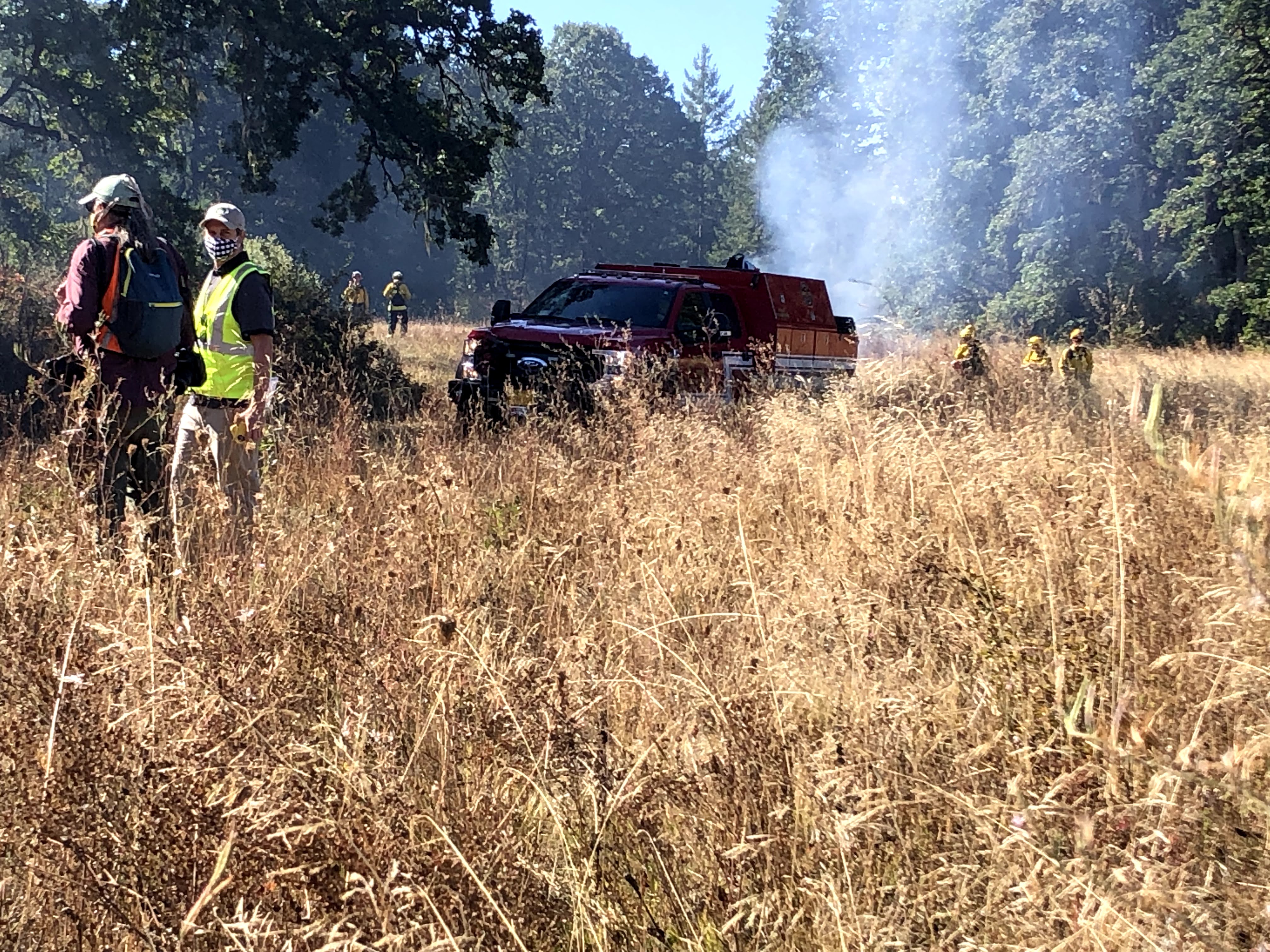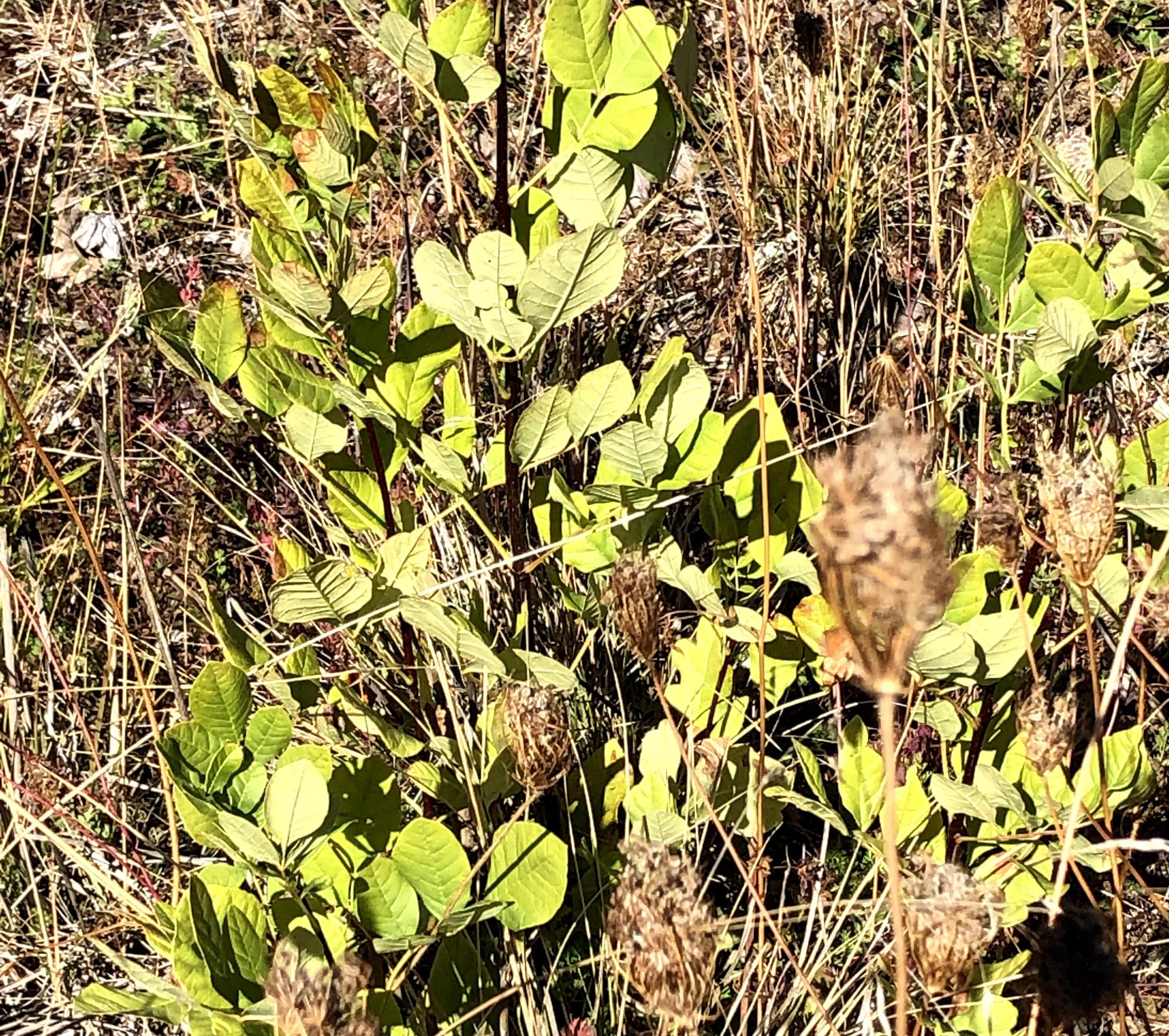
Fire at Herbert Farm: Rekindling an age-old restoration tool
By Michel Wiman
October 2021
A red-tailed hawk soared overhead as we gathered at the City of Corvallis’s Herbert Farm and Natural Area south of Corvallis, Oregon. A cadre of firefighters discussed technique for a test fire. Soon, smoke billowed into the bright blue fall sky as City of Corvallis firefighters ignited the tall prairie wildflower stalks and dried grasses. A once-regular practice by native peoples of the Willamette Valley, fire is again being used to remove encroaching shrubs and grass thatch and encourage native seed germination at Herbert. Without burning, herbaceous and smaller-statured native plants become smothered by invasive plants and grasses. Over time, the lack of fire on the landscape has suppressed threatened plants that are important for butterflies and pollinators, such as Kincaid’s lupine (Lupinus oreganus) and Nelson’s checkermallow (Sidalcea nelsonii).
Herbert Farm and Natural Area is owned by the City of Corvallis, with an Oregon Department of Fish and Wildlife conservation easement through the Willamette Wildlife Mitigation Program, funded by the Bonneville Power Administration. IAE was hired to write a restoration plan in 2002, and this site has been in restoration since then, working along with many partners. Ryegrass fields once dominated this site, but with weed removal, mowing, burning, and reseeding over the years, the prairie has in large part returned (See before and after photos in a previous blog post). The goal of today’s burn was a four-acre parcel of upland prairie at this 221-acre property.
Our prairie grasslands are critical for wildlife and pollinators, but they are challenging to maintain. Hanberry, DeBano and Kaye describe the nectar and nesting sites provided by forbs in healthy prairies in a recent publication. A threatened bird that has been found in this area, the streaked horned lark (Eremophila alpestris strigata), which prefers patchy, low-statured plant structure (e.g. no trees and shrubs) when nest-building. In Western Oregon, and indeed, all over the west and midwestern U.S., a major threat to grassland habitats are shrub and tree encroachment. Some scientists speculate that a higher level of carbon dioxide in our current atmosphere favors woody plants over herbaceous plants. Others say that trees and shrubs have an advantage in their rooting systems: while grasses do have deep rooting systems, they typically only use water in the top 25 cm of the soil column, and trees can pull water from deeper in the soil column. Whatever their advantage, it’s hard to walk Herbert Farm without seeing hawthorn (Crataegus sp.) and ash (Fraxinus sp.) shrubs encroaching. As indigenous peoples have known for centuries, burning shrubs and trees is an effective way to maintain prairie habitat.
The morning of the burn was cool and the tall dehiscent plants at Herbert Farm prairie were laden with heavy dew. A test run completed at 11 a.m. did not effectively burn the thatch of the grasses. A key goal of prescribed burning is to reduce grass thatch in order to release native forb seed from the seed bank and improve conditions for their germination. Higher temperatures during the prescribed burn combust the plant tissue and propagules, so a hot burn is desired here. The fire crew held off for a bit, eating lunch, checking their phones, and playing cards. At 1 p.m., the conditions were better. Ignition was initiated, and soon the target burn area were ablaze. The firefighters skillfully protected the large oaks from severe burns by spraying water from the tanker hoses on them.
After the burn, black grass thatch patches sent lazy puffs of smoke skyward, while the hawks circled again. It is our hope that this burn will create a more diverse, resilient landscape for pollinators, birds and other wildlife. You can see for yourself: Herbert Farm and Natural Area is open to the public and is a great place to walk the dog, watch the sunset, and botanize.
Restoration
Research
Education
Get Involved
Contact
Main Office:
4950 SW Hout Street
Corvallis, OR 97333-9598
541-753-3099
[email protected]
Southwest Office:
1202 Parkway Dr. Suite B
Santa Fe, NM 87507
(505) 490-4910
[email protected]
© 2024 Institute for Applied Ecology | Privacy Policy



